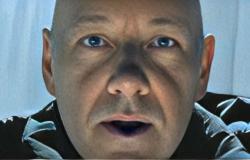
We are in the mid-twentieth century when Rudolph Leopold, an ophthalmologist, begins to methodically purchase the works of all the artists of the Secession: he can do this because, at that time, overshadowed by what had happened in France, they were still poorly considered. All in all recent years, therefore.
A collection made up of over five thousand workswhich will be acquired by the Austrian state, to create, from 2001, the Leopold Museum, an unmissable treasure chest of art for those who, visiting Vienna, want to totally immerse themselves in the cultural climate of the time. Klimt, Schiele and Kokoscka are the favourites. Just think of it alone Egon Schiele, managed to group together forty-four paintings (of the approximately three hundred and forty cataloged to date) and two hundred and eighty works on paper (one tenth of those existing). A formidable and far-sighted flair, capable of completing an undertaking that is currently unattainable, not only due to the extremely high quality of the works, but due to the prices they have achieved on the market.
Part of this formidable sequence of masterpieces often crossed the Austrian borders, so as to “bring them closer to an international audience”, to quote the words that Rudolph Leopold himself wrote in 2010, in the short opening text of the Skirà catalogue, printed to accompany an exhibition that is difficult to forget, “Schiele and his time” , set up in the exhibition rooms of Palazzo Reale in Milan. This was perhaps also Leopold’s last “institutional” farewell, as he passed away just twenty days after the closing of the exhibition.
Among the forty works exhibited at the time, three fundamental icons of all his painting: “The Hermits” of 1912, in which the artist, in a frighteningly twilight atmosphere, depicts himself together with Klimt, twenty-eight years older: a human as well as artistic reference, met when Schiele was seventeen. In the large canvas from 1912 the two bodies, joined in a joint that leaves no cracks, appear as usual to be planed and scraped on the surface of the painting, so as to find the underlying material, that is, what the eye usually does not see. Everything seems to merge, Klimt seems to support him. The faces have the same color as the background, while the bodies are symbolically cramped in their “wandering” under a single black cloak: “Bodies of men sickened by life, suicidal, but men who have feelings”.
Of formidable and no less expressive intensity, too “Self-portrait with alchechengi”, decidedly smaller, also from 1912: this time Schiele is alone within a painting with a highly calibrated compositional style. He depicted himself a hundred times, examining himself internally, without narcissistic complacency. Here, as in many other cases, the slanted perspective structures the space in a way that has never been seen before. With the lines dear to the Secession, he manages to perfectly represent his restless character. There is no drama, but melancholy. An infinite melancholy, marked by a series of obsessions and internal wounds. The hawthorns in the background, far from jugendstil decorativism, provide a lively color that attracts the observer’s attention, allowing the artist to look without being looked at.
In the end, “Autumn tree moved by the wind”, as extraordinary as his other similar subjects: we are still in 1912, the year of prison. One of the pinnacles of his art. The tree, pressed into the surface to the point of looking like a grain of marble, still retains life within itself. The wind finally stopped blowing, not only after making the leaves fall, but after managing to modify its structure, just as the painter desired. What we see is a tree, but this too is a sort of self-portrait. Schiele’s own words enter almost by themselves, between the lines: “Everything calls to mind the movements of the human body, the analogous movements of joy and suffering of plants. Painting alone is not enough for me, I know that with colors it is possible to create intrinsic qualities. You can intimately perceive, deep in your heart, an autumn tree in the middle of summer, I would like to paint this melancholy”.
The same thing happens every time with Schiele. Always, when you come into contact with his painting – a painting capable of moving and surprising us, involving and enchanting us like very few others – you have the impression of crossing with open eyes the threshold that separates reason from the unconscious with a lucidity and a perceptive synthesis that we allow ourselves only when the mind proceeds tightly tied to the cords of the dream. That is, when it is not necessary to mask or attenuate the secret and direct source of every most intimate impulse.
Schiele painted these paintings during a brief artistic parable, interrupted when the artist was only twenty-eight years old. He painted them in the Vienna of Freud, but also of Musil and Schnitzler. In the city where, at the end of the century and at the beginning of the twentieth century, with Otto Wagner and Gustav Klimt he had already deeply traced the path of the Secession, with marked and black outlines to delimit the subjects, the shapes, the colors, almost as if they were banks for avoid an imminent and inevitable flood. Where even graphics and writing come into close contact with pictorial representation.
It is a line that from Klimt’s soft gait will take on a different angularity with Schiele, merciless and essential, “expressionist” it will be defined. Not just designed to delimit an image, but a thought. Literature, philosophy and, very importantly, music blend with art with its more restrained and solemn notes, telling us of a Vienna in decline or the more alarmed and lacerating ones announcing the groans of the First World War; or, again, those, no less dramatic, of the terrible Spanish fever which, between 1918 and 1919, claimed millions of victims throughout Europe. It will abruptly end Schiele’s life, his wife Edith, Otto Wagner, Kolo Moser and many others. In 1918, having returned from a trip to Romania, Klimt also passed away, but due to a stroke and subsequent pneumonia, so much so that Schiele had time to portray him on his deathbed.
It is always written about Egon Schiele that he was obsessed with sex and death. An obvious fact, but a partial truth. Let’s say that he addresses these topics for what they are, openly, without allusions of any kind. This choice will cost him dearly. His subjects embarrassed, shaking public morals, to the point of creating censorious reactions in a Habsburg capital that frowned upon the development of an art subsequently considered “degenerate”.
Between 1910 and 1911 Egon Schiele stayed in the city of Krumau, in southern Bohemia, his mother’s hometown, but protests from the locals forced him to move to Neulengbach, a small village not far from the capital. Here, accused by a retired naval officer of having tricked his daughter who was not yet fourteen, he was imprisoned for twenty-one days on the very serious charge of corruption of minors, from which he was later cleared. But a way was still found to make him serve another three nights of detention, for having produced “pornographic material easily accessible to the eyes of adolescents”. One of his drawings was publicly burned during the trial.
The final thought goes to the large writing that appears in relief above the entrance to the Secession Palace, from the year of its construction, 1897: “Every time has its art, art has freedom”.




